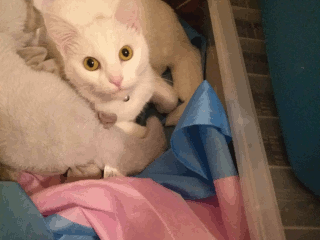Vols.: I, II, III, IV, V, VI, VII, VIII, IX, X, XI
Doing another one of these. I still intend on doing rebogs as well and I’ve added some more styling to make reposts stand out from my own words and make a more clear divide between them.
History and science fiction
Devereaux digs into the origin of the phrase “bread and circuses”.
So the surface reading seems clear: he is putting the Roman people on blast for letting their authority over public affairs be taken away, usurped by emperors who promise them bread and circuses (we’ll come to if this is an accurate representation of the history in a moment). They used to have all of this power, the power to bestow offices and armies, but now they cower fecklessly in the wake of imperial slaughter and arbitrary rule.
Except, of course – wait a minute – isn’t the theme of this passage that power is an unwise thing to ask for? The theme of the whole poem is that you shouldn’t be asking the gods for these sorts of things!
Also from Devereaux.
Instead, where real armors evolve against threats, fictional armors evolve as a visual language, borrowing the design elements of other fictional armors far more often than they dip into their own historical exemplars, with the result that the whole thing sort of devours itself.
Fiction referencing exclusively other works for fiction rather than looking to the world is something I think about as well from time to time.
Goldwag reviews a book from the man who coined the word “robot”.
The novel starts with Captain van Toch, a Czech sea-captain in the service of a Dutch trading company, stumbling upon an isolated community of giant amphibians in the Dutch East Indies, living on a single tiny island, their numbers culled constantly by sharks. Van Toch realizes that they’re trainable, and extremely intelligent, and has the idea to plant colonies of them across the Pacific to work as pearl divers. After his death, the Pacific Export Company transitions from luxury goods to mass labor, selling newts across the world as an undersea work force capable of hydraulic and maritime engineering, which results in Newts settling most of the world’s coastlines and becoming an integral part of the global economy. “So now we find the salamanders on the road to their finest flowering; but the human world, too, is enjoying unprecedented prosperity. New continental coasts are being feverishly constructed, new dry land is emerging from where shallows used to be; artificial air support islands are springing up in the middle of the ocean.” (Newts, pg. 165). For all the absurdity, however, Čapek treats his topic seriously. We’re given footnotes, citations, discussions of legal dilemmas and cultural disputes, discourse on the economic impact of newt labor and how it affected different nations and groups, taxonomies on newt evolution and biology. It doesn’t feel like a cheap trick or a gimmick because it’s all done with such care.
Gender
In short, to acknowledge transmasculinity, a society would have to first admit that manhood—just like womanhood—is a social class and not a ‘natural’ category. Its people would have to acknowledge that the desire for independence and self-actualization exists within all of us and is not, in fact, stored in the balls.
Thorn outlines very well the fundamental ideological problems in the N.H.S. and how trans healthcare is handled that I think apply very well to the H.S.E. here in Ireland as well.
There are even more serious charges. The coroners’ reports into the deaths of Sophie Williams and Alice Litman said lack of gender affirming care contributed to their deaths. That is to say, it is a matter of publicly recorded fact that the NHS’ failure to provide gender affirming care has contributed to the deaths of patients. Nobody at NHS England has resigned or faced consequences.
Of course panic, misinformation, and mistrust take hold in these conditions! Of course people come to believe the NHS are making secret plots behind closed doors! These conditions are entirely of the NHS’ own making. Slapping a famous trans person’s face on a new outreach program does nothing to address them. As I told Colonel Korn, if the NHS wants to increase trust they should start by apologising.
But the Colonel expressed his bind to me the same way every other NHS senior official I’ve spoken to has. The Department of Health and Social Care tells the NHS how they have to spend their money. The mandate they get from the Health Secretary tells them what services they have to commission: if it says “Ten more transplant wards,” they need ten more transplant wards, and that’s that. If it says “Spend £90m pathologizing trans people,” that’s what he has to do.
This point bears underlining: every single person I have spoken to in the NHS- from local GPs to the National bosses- told me they are powerless. There is nobody at any level of the organisation who takes responsibility for the state the service is in and the suffering it is causing. Every single person blames the person above them, even the man at the top.
Technology
Followup from the first of these posts.
In my last post, I succesfully made a bluetooth/wifi Magic Wand Plus. Unfortunately, though, I completely bypassed the original Hitachi board, which happens to be where all the buttons and LEDs are attached, so it was only usable remotely. To make the physical controls work again, I could either make my own copy of the Hitachi’s board, with buttons and LEDs in the same places, or somehow reprogram the original board and make it do my bidding.
The first option requires a lot of measuring, which I find really annoying to do. So, let’s hack the Hitachi’s microcontroller!
I love economic forces.
MongoDB’s popularity among managers during its peak was largely down to the idea that you no longer needed a database expert. Just throw the data into the document DB puddle and let your existing less-specialised developers handle it. The promise of the document database during the peak of their hype was that you didn’t need to employ as many specialists.
Electron, PhoneGap, and React Native promised to let companies replace their expensive platform specialists with more commodified generalists.
Standardisation in web development lowers costs, increases predictability, and makes the various browsers more interchangeable. It’s a hedge that reduces the individual market power of each browser, but usually in equal degree while increasing the value of the overall web, leaving each browser vendor better off as a result. Their market share might not increase but they have a bigger cut of a larger pie. Incompatibility tends to drive developers and companies to other platforms, reducing the overall pie.
Standardisation of labour, conversely, does not benefit labour.
Everybody hates A.I! Here’s another reason to.
Whatever happens to Python or pip is likely to eventually happen to more projects or more frequently. I am concerned mostly about maintainers that are handling this in isolation. If they don't know that AI-generated reports are commonplace, they might not be able to recognize what's happening before wasting tons of time on a false report. Wasting precious volunteer time doing something you don't love and in the end for nothing is the surest way to burn out maintainers or drive them away from security work.
Seth Larson
Seeing as I dusted off Pico-8 again recently here’s a little post about doing palette swaps in it.
The concept of a palette swap is drawing something with a different set of colors. It’s a good way to get more mileage out of your PICO-8 sprites. There are a bunch of things you can do with palette swapping
- create variations on a character
- make simple looping animations
- fade in or out of a scene
- simulate day/night cycles
But what does this mean for us as programmers? How do we represent the concept in code?
Technical website bullshit, but something I’ve been meaning to look at setting up for this site too.
Bots I block fall into one of the following categories:
- Bots that only serve to power adtech on other sites. My site has no ads, but I allow bots such as Google’s AdsBot.
- Intellectual property snitches. I forbid robots that scan for plagiarism, trademark/copyright violations, brand protection, etc.
- Robots that power invasive background checks that border on cyberstalking.
- Scrapers that build datasets to train Generative AI (GenAI), such as large language models (LLMs). I don’t block search clients used by GenAI research assistants; I only block scrapers used to train GenAI models.
Everything else
I used to be one of the people who “corrected” people about the word Gaelic. I am sorry.
The Irish Language was referred to as both Gaelic and Irish until the Republic was formed. “Irish” was mainly used by academics; “Gaelic” was used by the common people.
The Republic chose “Irish” over “Gaelic” for political/nationalistic reasons.
Dahl started an Instagram account in 2023 that parodied tradwife content creators, after her own account was banned by the platform multiple times. Tradwife content (short for “traditional wife) is fetish content, even if the “wife” isn’t showing skin. It’s a fantasy, and always has been, even when it was used to sell ovens to 1960s homemakers.
Kim is the person who taught me that judging a homeless person for wanting to buy alcohol or cigarettes is utter folly. When you’re homeless, the nights are cold, the world is unfriendly, and everything is painfully uncomfortable. Whether you’re sleeping under a bridge, in a tent, or at a shelter, it’s hard to rest easy. You are likely to have injuries or chronic conditions that bother you persistently, and little access to medical care to deal with it. You probably don’t have much healthy food.
In that chronically uncomfortable, over-stimulating context, needing a drink or some cigarettes makes fucking sense. As Kim explained to me, if you’re laying out in the freezing cold, drinking some alcohol may be the only way to warm up and get to sleep. If you’re under-nourished, a few smokes may be the only thing that kills the hunger pangs. And if you’re dealing with all this while also fighting an addiction, then yes, sometimes you just need to score whatever will make the withdrawal symptoms go away, so you can survive.
A cute story about Star Wars: Battlefront.
But it wasn’t just that it was super difficult and took a long time. The hilarious part of all of this is that the fact that there was still a battle going on outside meant that the number one reason we didn’t get to destroy the shield bunker was that the match had ended. The AI armies we were ignoring went on fighting their war and reached a conclusion before we were able to deal enough damage to the damn thing.


